Find your wild in Cascade Locks
Robert Weinman

Some wild areas refuse to be tamed. Cascade Locks, a small, quiet city nestled in the heart of the Columbia River Gorge National Scenic Area, is one: a place where even the mighty Columbia River bowed to the forces of nature.
What many in The Intertwine don’t realize is just how close they are to Cascade Locks, home of the massive landslides that, one thousand years ago, stopped the river temporarily to create a “Bridge of the Gods.”
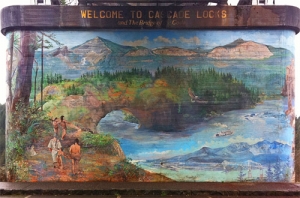 Native American legend has it that with this land bridge, the gods could cross the river without getting their feet wet (because no one likes wet feet, apparently).
Native American legend has it that with this land bridge, the gods could cross the river without getting their feet wet (because no one likes wet feet, apparently).
Native Americans have gathered at Cascade Locks for thousands of years, and the Warm Springs, Yakama, Nez Perce, and Umatilla treaty tribes are still very active and influential in the region. But now a new group is showing up: outdoor recreation fans drawn -- by design -- to the wild nature of Cascade Locks.
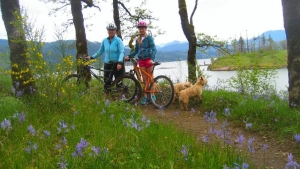 In 2011, the City of Cascade Locks adopted a vision statement and economic development strategy aimed at balancing recreation with commercial and industrial business development. In 2012, a recreational trails plan called “Connect Cascade Locks” was put into action, with recommendations ranging from wayfinding signage and bike racks to fostering a locally-based trail stewardship group that could help build and maintain new trails in partnership with the US Forest Service.
In 2011, the City of Cascade Locks adopted a vision statement and economic development strategy aimed at balancing recreation with commercial and industrial business development. In 2012, a recreational trails plan called “Connect Cascade Locks” was put into action, with recommendations ranging from wayfinding signage and bike racks to fostering a locally-based trail stewardship group that could help build and maintain new trails in partnership with the US Forest Service.
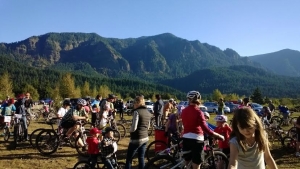 It’s no wonder that Cascade Locks sees new value in its proximity to the wild. Multiple hiking trails converge right here, including the legendary Pacific Crest Trail, which drops four thousand vertical feet over nine miles to cross the Columbia River at the iconic steel Bridge of the Gods, built in 1920. There’s also a growing system of nearby mountain bike trails, which now host events like the Short Track Mountain Bike Championships, Dimwits With Bright Lights Night Rides, and Take a Kid Mountain Biking Day.
It’s no wonder that Cascade Locks sees new value in its proximity to the wild. Multiple hiking trails converge right here, including the legendary Pacific Crest Trail, which drops four thousand vertical feet over nine miles to cross the Columbia River at the iconic steel Bridge of the Gods, built in 1920. There’s also a growing system of nearby mountain bike trails, which now host events like the Short Track Mountain Bike Championships, Dimwits With Bright Lights Night Rides, and Take a Kid Mountain Biking Day.
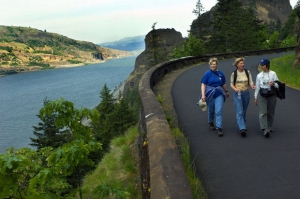 For those seeking smoother terrain, the newly restored nearby Historic Columbia River Highway State Trail conducts bikers and walkers from Troutdale to Cascade Locks without using Interstate 84.
For those seeking smoother terrain, the newly restored nearby Historic Columbia River Highway State Trail conducts bikers and walkers from Troutdale to Cascade Locks without using Interstate 84.
And now, in close partnership with The Columbia Gorge Racing Association, Cascade Locks has transformed itself into one of the top sailing locations in North America, promoting world-class regattas and clinics for small boat sailing.
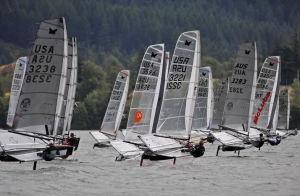 With the addition of a series of new water trails ranging from beginner to expert, kayakers and paddlers can now weave their way through protected coves, secluded lakes, or through the challenging whirlpools and eddies of the original locks.
With the addition of a series of new water trails ranging from beginner to expert, kayakers and paddlers can now weave their way through protected coves, secluded lakes, or through the challenging whirlpools and eddies of the original locks.
Outdoor recreation is already paying off here, with new businesses including a waterfront brewery as well as a fresh fish market run by a local family from the Confederated Tribes of the Umatilla Indian Reservation. Other businesses are expanding, from an ice cream stand to a restored ale house and the famous Charburger Restaurant.
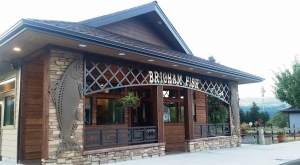 And some of the plan's more ambitious features are just about to set sail.
And some of the plan's more ambitious features are just about to set sail.
“One of our most ambitious projects is the proposed riverfront beach expansion,” said Holly Howell of the Port of Cascade Locks.
“For the past five years we have worked with the Army Corps of Engineers, Oregon Department of State Lands, the four Columbia River Treaty Tribes, and the Columbia River Inter-Tribal Fish Commission to design and develop a beach that will increase recreation and tribal fishing access while improving natural habitat,” Howell added.
 After a day kayaking and standup paddling on the river, one recent visitor to Cascade Locks -- Moses Winston of New Mexico -- sat down at Thunder Island Brewing, the new microbrewery, and offered this apt toast to the setting sun:
After a day kayaking and standup paddling on the river, one recent visitor to Cascade Locks -- Moses Winston of New Mexico -- sat down at Thunder Island Brewing, the new microbrewery, and offered this apt toast to the setting sun:
“Find your wild, refuse to be tamed, come to Cascade Locks.”

 Bob Weinman is a coordinator with the office of Economic and Workforce Development at Mt Hood Community College. A resident of Hood River, Oregon, Bob is also an avid outdoor enthusiast in paddling, hiking and sailing and finds Cascade Locks one of the new hidden treasures of the Pacific Northwest for outdoor recreation.
Bob Weinman is a coordinator with the office of Economic and Workforce Development at Mt Hood Community College. A resident of Hood River, Oregon, Bob is also an avid outdoor enthusiast in paddling, hiking and sailing and finds Cascade Locks one of the new hidden treasures of the Pacific Northwest for outdoor recreation.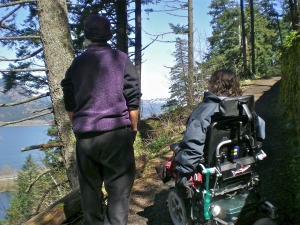 Living in Portland, I feel fortunate to be surrounded by natural beauty and to have great hiking and outdoor resources all around me. But as a wheelchair user, I also feel frustration. Where’s the information I need to access these hiking opportunities?
Living in Portland, I feel fortunate to be surrounded by natural beauty and to have great hiking and outdoor resources all around me. But as a wheelchair user, I also feel frustration. Where’s the information I need to access these hiking opportunities?  With the right information (a simple and empowering concept) people could make their own determinations – and avoid the frustration of visiting an outdoor site only to discover that it is unusable, perhaps for the most inconsequential reason.
With the right information (a simple and empowering concept) people could make their own determinations – and avoid the frustration of visiting an outdoor site only to discover that it is unusable, perhaps for the most inconsequential reason.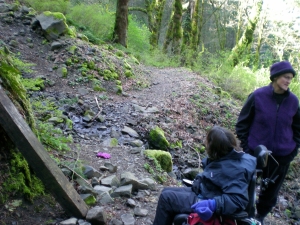 Starting in 2009, the new committee drew from our collective experience to develop AR’s
Starting in 2009, the new committee drew from our collective experience to develop AR’s 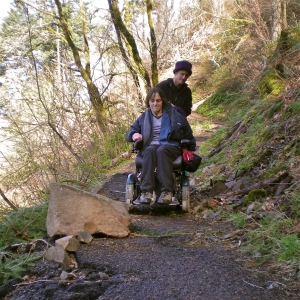 Now, AR is working to apply the Guidelines’ principles to create a Regional Online Trail Map. This map will place photos, videos and descriptions of significant features along trails that are mapped using simple smart-phone technology.
Now, AR is working to apply the Guidelines’ principles to create a Regional Online Trail Map. This map will place photos, videos and descriptions of significant features along trails that are mapped using simple smart-phone technology. The Trail Map is being supported by a generous
The Trail Map is being supported by a generous 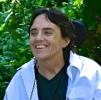 Georgena Moran is the Founder and Project Coordinator of
Georgena Moran is the Founder and Project Coordinator of  My name is Jerry Magee, and I’m the current President of the
My name is Jerry Magee, and I’m the current President of the 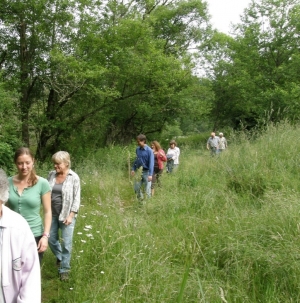
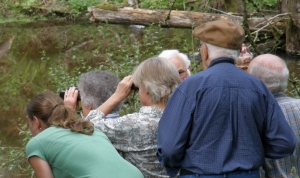
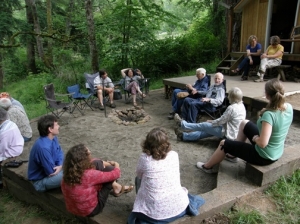
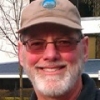 Jerry Magee is the current President of the South Park Unitarian-Universalist Fellowship in West Linn, Oregon. He and his family have been members of this small congregation since 1988. For more information about the Fellowship, please visit their
Jerry Magee is the current President of the South Park Unitarian-Universalist Fellowship in West Linn, Oregon. He and his family have been members of this small congregation since 1988. For more information about the Fellowship, please visit their 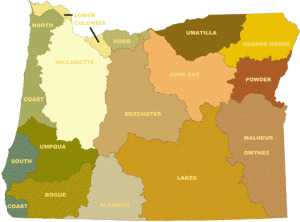
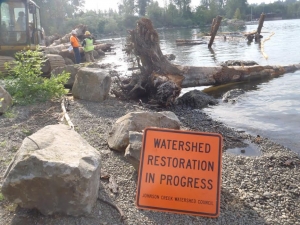
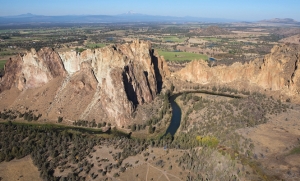 OWEB has supported the Deschutes partnership since 2008, and its accomplishments are impressive. The success of this partnership, and others like it, has led OWEB to create a new program, which we call “focused investment partnerships,” that promote landscape-scale collaboration to achieve prioritized outcomes.
OWEB has supported the Deschutes partnership since 2008, and its accomplishments are impressive. The success of this partnership, and others like it, has led OWEB to create a new program, which we call “focused investment partnerships,” that promote landscape-scale collaboration to achieve prioritized outcomes.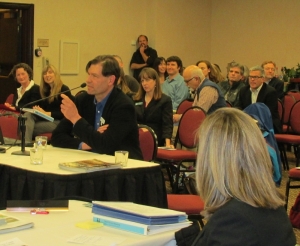 This past January, OWEB held its quarterly meeting in Portland, where
This past January, OWEB held its quarterly meeting in Portland, where 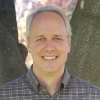 Tom Byler is the Executive Director of the
Tom Byler is the Executive Director of the 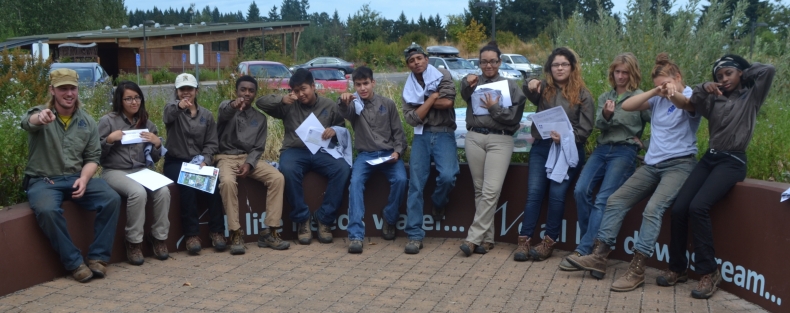
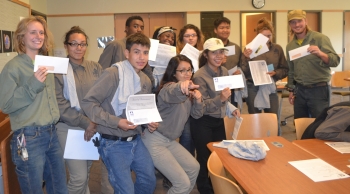 More than 45 percent of us report a history of trauma. Not coincidentally, just over 45 percent of us also report struggling with depression and anxiety. We need time and opportunities in nature, and yet there are tremendous obstacles for many of us, from not feeling welcome in public spaces to not having the transportation or gear necessary to access this amazing region.
More than 45 percent of us report a history of trauma. Not coincidentally, just over 45 percent of us also report struggling with depression and anxiety. We need time and opportunities in nature, and yet there are tremendous obstacles for many of us, from not feeling welcome in public spaces to not having the transportation or gear necessary to access this amazing region. Bringing our track record of engaging and coaching diverse youth, Momentum Alliance connected 10 underrepresented young people to create a summer crew. Using our Momentum Alliance model of coaching and relationship building, we helped create an inclusive and strong team environment.
Bringing our track record of engaging and coaching diverse youth, Momentum Alliance connected 10 underrepresented young people to create a summer crew. Using our Momentum Alliance model of coaching and relationship building, we helped create an inclusive and strong team environment. The Momentum Alliance Crew was “one of my best crews ever,” says Crew Leader Henry Hays-Wehle. “I learned a lot about how best to support youth from underrepresented communities to succeed in outdoor education and career exploration.”
The Momentum Alliance Crew was “one of my best crews ever,” says Crew Leader Henry Hays-Wehle. “I learned a lot about how best to support youth from underrepresented communities to succeed in outdoor education and career exploration.” 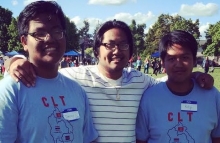 Channbunmorl "Chom" Sou (middle) is the son of genocide survivors from Cambodia. Chom witnessed multiple suicide attempts by his mother, became a victim of gang violence and grew up in poverty. These experiences led him to become the first person in his family to graduate from college and go on to earn a masters degree, specializing in program evaluation. He is a former board member of the Asian Pacific American Network of Oregon (APANO). Chom coaches youth fulltime at Momentum Alliance to ensure that underrepresented youth have access to opportunities, achieve their goals and build a collective voice advocating for social justice.
Channbunmorl "Chom" Sou (middle) is the son of genocide survivors from Cambodia. Chom witnessed multiple suicide attempts by his mother, became a victim of gang violence and grew up in poverty. These experiences led him to become the first person in his family to graduate from college and go on to earn a masters degree, specializing in program evaluation. He is a former board member of the Asian Pacific American Network of Oregon (APANO). Chom coaches youth fulltime at Momentum Alliance to ensure that underrepresented youth have access to opportunities, achieve their goals and build a collective voice advocating for social justice.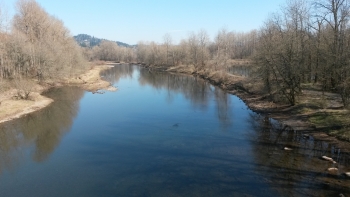 Many are familiar with the
Many are familiar with the  The free-flowing East Fork of the Lewis River is home to native runs of Chinook, Coho and Chum salmon, and winter and summer steelhead. The lower floodplain offers hundreds of acres of bottomland habitat for waterfowl and other species. Clark County and its partners have assembled more than 2,000 acres of land from the confluence of the East Fork and North Fork Lewis Rivers to Lewisville Park near Battle Ground. While much of this land is protected for its habitat value and has limited public access,
The free-flowing East Fork of the Lewis River is home to native runs of Chinook, Coho and Chum salmon, and winter and summer steelhead. The lower floodplain offers hundreds of acres of bottomland habitat for waterfowl and other species. Clark County and its partners have assembled more than 2,000 acres of land from the confluence of the East Fork and North Fork Lewis Rivers to Lewisville Park near Battle Ground. While much of this land is protected for its habitat value and has limited public access, 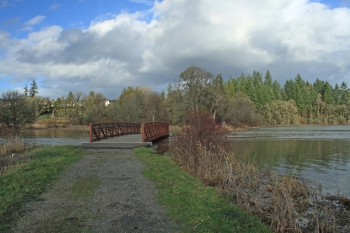 you will arrive at a waterfowl viewing blind where you may see migrating tundra swans feeding on camas bulbs in the wetland ponds. Migrating salmon smolts also use the ponds for refuge and forage. From the large bridge across Brezee Creek, there is an expansive view of the bottomland landscape. As you look upstream, know that most of the bottomlands on the south side of the river are protected. Continuing over the bridge, the trail narrows and follows the levee, providing more intimate views of the river.
you will arrive at a waterfowl viewing blind where you may see migrating tundra swans feeding on camas bulbs in the wetland ponds. Migrating salmon smolts also use the ponds for refuge and forage. From the large bridge across Brezee Creek, there is an expansive view of the bottomland landscape. As you look upstream, know that most of the bottomlands on the south side of the river are protected. Continuing over the bridge, the trail narrows and follows the levee, providing more intimate views of the river. 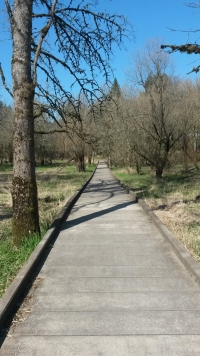 The Lewis and Washougal River systems are the two primary systems we expect to contribute to the recovery of salmon and steelhead populations in Clark County. The City of Camas, Clark County and other partners have managed to assemble an 100-acre greenway along the Lower Washougal River. The City recently completed a 1.5 mile-long handicap-accessible
The Lewis and Washougal River systems are the two primary systems we expect to contribute to the recovery of salmon and steelhead populations in Clark County. The City of Camas, Clark County and other partners have managed to assemble an 100-acre greenway along the Lower Washougal River. The City recently completed a 1.5 mile-long handicap-accessible 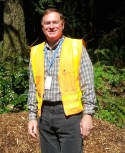 Patrick Lee is a greenspaces geezer, proud of his accomplishments to date and excited about the work to come. He coordinates Clark County’s Legacy Lands Program.
Patrick Lee is a greenspaces geezer, proud of his accomplishments to date and excited about the work to come. He coordinates Clark County’s Legacy Lands Program.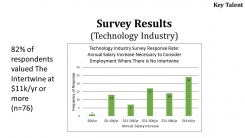
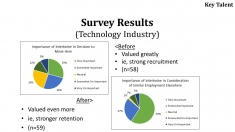
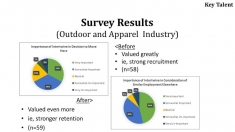
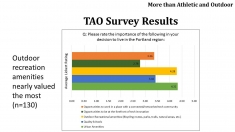
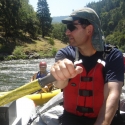 Intertwine Alliance Executive Director Mike Wetter has directed the coalition since its early days as a Metro initiative, before it became a formal nonprofit in 2011. Mike was chief of staff to former Metro Council President David Bragdon, and a business consultant for 13 years serving public, private and nonprofit clients. A visionary leader full of creative ideas, he's an avid whitewater rafter, kayaker, cyclist and hiker.
Intertwine Alliance Executive Director Mike Wetter has directed the coalition since its early days as a Metro initiative, before it became a formal nonprofit in 2011. Mike was chief of staff to former Metro Council President David Bragdon, and a business consultant for 13 years serving public, private and nonprofit clients. A visionary leader full of creative ideas, he's an avid whitewater rafter, kayaker, cyclist and hiker.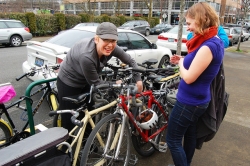 Many of us remember walking or bicycling to and from school as children. In fact, a generation ago, in 1969, nearly 50 percent of the U.S. population did so. Today that figure stands at 13 percent.
Many of us remember walking or bicycling to and from school as children. In fact, a generation ago, in 1969, nearly 50 percent of the U.S. population did so. Today that figure stands at 13 percent.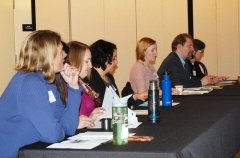 The reality is that too often transit-access projects, projects that improve safe routes around schools and neighborhood centers, and projects that provide healthy options for traveling distances shorter than 3 miles (which account for 44 percent of all trips, and could easily be replaced by walking or bicycling) have not traditionally been successful in a constrained funding environment. The reality is that most people do not recognize or understand the benefit of solidly investing in active transportation projects, or of the benefit they bring to the transportation system we all rely upon.
The reality is that too often transit-access projects, projects that improve safe routes around schools and neighborhood centers, and projects that provide healthy options for traveling distances shorter than 3 miles (which account for 44 percent of all trips, and could easily be replaced by walking or bicycling) have not traditionally been successful in a constrained funding environment. The reality is that most people do not recognize or understand the benefit of solidly investing in active transportation projects, or of the benefit they bring to the transportation system we all rely upon.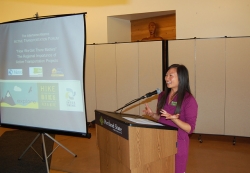
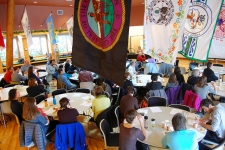 We know there is a great need to continue these conversations, and to add to them, which was confirmed by the energy in the room and the difficulty keeping the conversation to one topic at a time. We are already at work planning the next forum, and welcome your input.
We know there is a great need to continue these conversations, and to add to them, which was confirmed by the energy in the room and the difficulty keeping the conversation to one topic at a time. We are already at work planning the next forum, and welcome your input. 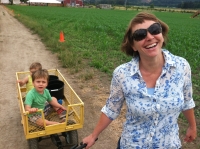 With a background in cultural anthropology, an interest in the effects of transportation choices on our health and the environment, and two boys under the age of 6, Kari Schlosshauer has brought a diversity of experience working around the globe to her role as the Pacific Northwest Regional Policy Manager for the Safe Routes to School National Partnership. She works in the Portland and Salem metropolitan regions and Southwest Washington to increase funding opportunities and improve transportation policies that support safe, healthy walking and bicycling opportunities for children and families.
With a background in cultural anthropology, an interest in the effects of transportation choices on our health and the environment, and two boys under the age of 6, Kari Schlosshauer has brought a diversity of experience working around the globe to her role as the Pacific Northwest Regional Policy Manager for the Safe Routes to School National Partnership. She works in the Portland and Salem metropolitan regions and Southwest Washington to increase funding opportunities and improve transportation policies that support safe, healthy walking and bicycling opportunities for children and families. 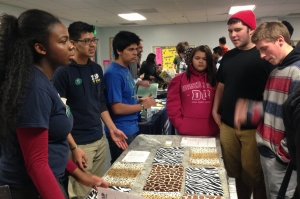 Job opportunities, networking, food, music, games. What could be better than that? On Dec. 30, 2014, the Youth Mentoring Collaborative hosted its first Youth Environmental Job Fair & Teen Night at Montavilla Community Center in Southeast Portland. The event attracted a crowd of diverse teens -- 208 total! -- with many bringing along parents, family and friends.
Job opportunities, networking, food, music, games. What could be better than that? On Dec. 30, 2014, the Youth Mentoring Collaborative hosted its first Youth Environmental Job Fair & Teen Night at Montavilla Community Center in Southeast Portland. The event attracted a crowd of diverse teens -- 208 total! -- with many bringing along parents, family and friends.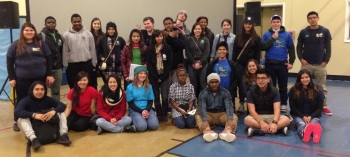 Attendees represented a wide range of races and ethnicities, and came from a variety of local neighborhoods. To that end, we met our goal of reaching out to a new audience.
Attendees represented a wide range of races and ethnicities, and came from a variety of local neighborhoods. To that end, we met our goal of reaching out to a new audience. Other collaborative members include Mt. Hood Community College's Project YESS, Outdoor School, Trackers Earth, Saturday Academy, Oregon Zoo's ZAP teen program, the OSU Extension Service, Portland Parks & Recreation, ROSE Community Development and many more.
Other collaborative members include Mt. Hood Community College's Project YESS, Outdoor School, Trackers Earth, Saturday Academy, Oregon Zoo's ZAP teen program, the OSU Extension Service, Portland Parks & Recreation, ROSE Community Development and many more. 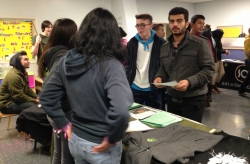 My own affiliation is with Portland Park & Recreation's GRUNT program, which I graduated from in 2011. I have been working in the City Nature department ever since. PP&R is committed to helping youth find the skills and work experience they need to be successful. Over the years, these programs have provided numerous jobs and internships to youth -- like me! -- who are now pursuing college degrees with an environmental emphasis, and are moving into leadership positions with PP&R City Nature. PP&R does not just stop at providing jobs; it also include long-term mentoring, internships and skills training.
My own affiliation is with Portland Park & Recreation's GRUNT program, which I graduated from in 2011. I have been working in the City Nature department ever since. PP&R is committed to helping youth find the skills and work experience they need to be successful. Over the years, these programs have provided numerous jobs and internships to youth -- like me! -- who are now pursuing college degrees with an environmental emphasis, and are moving into leadership positions with PP&R City Nature. PP&R does not just stop at providing jobs; it also include long-term mentoring, internships and skills training. Thao Nguyen is a biology major at the University of Portland. After her GRUNT graduation in 2011, she worked for Portland Parks & Recreation’s Nature Day Camp as a teacher assistant, and has continued to be involved with PP&R through various jobs and internships ever since.
Thao Nguyen is a biology major at the University of Portland. After her GRUNT graduation in 2011, she worked for Portland Parks & Recreation’s Nature Day Camp as a teacher assistant, and has continued to be involved with PP&R through various jobs and internships ever since.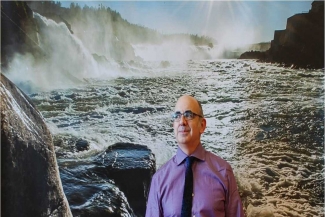 When you walk through
When you walk through  Q: Before you came to Metro, you worked on the campaign to pass the first successful natural areas bond measure for the region. Tell me a little bit about it.
Q: Before you came to Metro, you worked on the campaign to pass the first successful natural areas bond measure for the region. Tell me a little bit about it.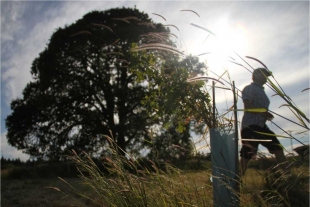 Q: When you talk about it “feeling startup,” did you have a sense what it would grow into?
Q: When you talk about it “feeling startup,” did you have a sense what it would grow into?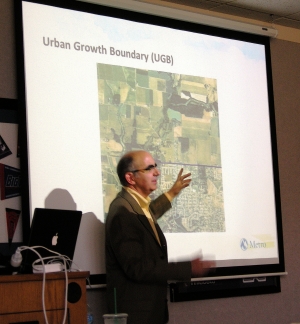 Q: Tell me about one place in the portfolio that seemed impossible when you started.
Q: Tell me about one place in the portfolio that seemed impossible when you started.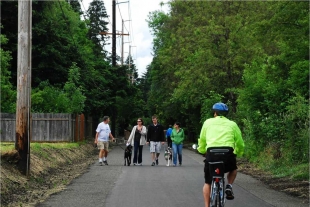 Q: As you know, Metro is developing a plan that will shape our system of regional parks and natural areas for decades to come. If we are bold, what can the region achieve?
Q: As you know, Metro is developing a plan that will shape our system of regional parks and natural areas for decades to come. If we are bold, what can the region achieve? Laura Oppenheimer Odom leads Metro’s parks and nature communications team. She worked closely with Jim Desmond, who departed Metro last month to take on a new role as director of The Nature Conservancy’s Oregon chapter.
Laura Oppenheimer Odom leads Metro’s parks and nature communications team. She worked closely with Jim Desmond, who departed Metro last month to take on a new role as director of The Nature Conservancy’s Oregon chapter.